#Carl Laemmle
Text

Albert Einstein speaking with Carl Laemmle during a visit to Universal Studios in 1931.
69 notes
·
View notes
Text

83 notes
·
View notes
Text
The silent film The Man Who Laughs (1928) has entered the public domain!
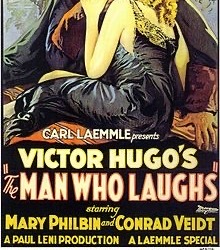
I’d highly recommend it if any of these things intrigue you:
Conrad Veidt, known for such roles as Cesare in The Cabinet of Dr. Caligari (1920), Major Strasser in Casablanca (1942), & more
Mary Philbin, who played Christine Daaé in The Phantom of the Opera (1920)
the iconic slit mouth look that inspired DC’s Joker
enjoying a Victor Hugo story without reading a Victor Hugo length novel
You can even watch it right on its Wikipedia page!
#the man who laughs#l’homme qui rit#gwynplaine#conrad veidt#mary philbin#carl laemmle#silent film#victor hugo
52 notes
·
View notes
Video
youtube
Beyond the Smile: Conrad Veidt's Legacy On Screen and Behind the Scenes
Antonia is the great-niece of Universal founder Carl Laemmle, and makes videos about the studio’s early history, with a focus on horror.
#youtube#conrad veidt#universal studios#universal monsters#universal horror#film history#old hollywood#carl laemmle
26 notes
·
View notes
Text

#bride of frankenstein#1935#universal monsters#frankenstein#boris karloff#elsa lanchester#james whale#carl laemmle#movie poster#horror#colin clive
35 notes
·
View notes
Photo

#carl laemmle#the cat and the canary#laura la plante#forrest stanley#tully marshall#movie poster#movie posters#film#silent film#movies#paul leni#flora finch#martha mattox
23 notes
·
View notes
Text


The Phantom of the Opera (1925) movie posters.
109 notes
·
View notes
Text

Movie Odyssey Retrospective
The Phantom of the Opera (1925)
By the time French journalist-turned-novelist Gaston Leroux published Le Fantôme de l'Opéra as a serial in 1909, he was best known for his detective fiction, deeply influenced by Sir Arthur Conan Doyle and Edgar Allan Poe. The Phantom of the Opera plays out like a Poe work – teeming with the macabre, painted with one character’s fanatic, violent lust. In serial form and, later, as a novel, Leroux’s work won praise across the West. One of the book’s many fans was Universal Pictures president Carl Laemmle who, on a 1922 trip to Paris, met with Leroux. While on the trip, he read Phantom (a copy gifted to him by Leroux) in a single night, and bought the film rights with a certain actor already in mind.
Laemmle’s first and only choice for the role of the Phantom was about to play Quasimodo in Universal’s 1923 adaptation of Victor Hugo’s The Hunchback of Notre Dame. That actor, Lon Chaney, had subsisted on bit roles and background parts since entering into a contract with Universal in 1912. Chaney, who was about to sign a contract with Metro-Goldwyn-Mayer (MGM), became an instant sensation the moment The Hunchback of Notre Dame hit theaters. Audiences and critics in the early 1920s were simultaneously horrified at the sight of his Quasimodo yet, crucially, felt a profound empathy towards the character.
In his prior films, as well as Hunchback, Chaney separated himself from his fellow bit actors with a skill that almost no other actor in Hollywood possessed: he was also a makeup artist. At this time, actors applied their own makeup – often simple cosmetics or unconvincing facial hair. None of the major Hollywood studios had makeup departments in the early 1920s, and it would not be until the 1940s that each studio had such a department. Chaney, the son of two deaf and mute adults, was also a master of physical acting, and could expertly use his hands and arms to empower a scene. Though already bound for MGM, Chaney could not possibly pass up the role of Erik, the Phantom. Despite frequent clashes with director Rupert Julian (1923’s Merry-Go-Round and 1930’s The Cat Creeps; despite being Universal’s most acclaimed director at this time, Julian was either sacked or walked away mid-production), Chaney’s performance alone earned him his place in cinematic history and, for this film, an iconic work of horror cinema and silent film.
As the film begins, we find ourselves at the Palais Garnier, home of the Paris Opera. The Opera’s management has resigned, turning over the Palais Garnier to new ownership. As the ink dries on the contract and as the previous owners depart, they warn about a Phantom of the Opera, who likes sitting in one of the box seats. Soon after, prima donna Carlotta (Virginia Pearson) receives a threatening letter from the Phantom. She must step aside and allow a chorus girl, Christine Daaé (Mary Philbin), sing the lead role in Charles Gounod’s Faust. If she refuses to comply, the Phantom promises something horrific. Aware of the letter, Christine the next day confers with her loved one, the Vicomte Raoul de Chagny (Norman Kerry), that she has been receiving musical guidance from a “Spirit of Music”, whom she has heard through the walls of her dressing room. Raoul laughs this off, but a series of murderous incidents at that evening’s production of Faust is no laughing matter. Christine eventually meets the shadowy musical genius of the Phantom, whose name is Erik (Chaney). In his subterranean lair, he professes his love to her – a love that will never die.
Rupert Julian’s The Phantom of the Opera also stars Arthur Edmund Carewe as the Inspector Ledoux (for fans of Andrew Lloyd Webber’s musical version, this is the Madame Giry character); Gibson Gowland as Simon Buquet; and John St. Polis as Raoul’s brother, the Comte Philippe de Chagny.
Before extoling this film, one has to single out Mary Philbin and Norman Kerry as the glaring underperformers in this adaptation. Philbin would become a much better actress than she displays here, if The Man Who Laughs (1928) is any indication. Yet, Philbin’s Christine is a blank slate, devoid of much personality and interest. It also does not help that Norman Kerry plays Raoul in a similar fashion. Raoul, in any adaptation of Phantom, tends to be a boring role. But goodness me, for a B-actor who was acclaimed for his tall, dark, and handsome looks and screen persona, he is a charisma vacuum here. During Kerry’s more intimate scenes with Philbin, you may notice that Kerry has a case of “roving hands” when he gets close with Philbin. Philbin, who could not visibly react to these moments on-camera, surreptitiously took Kerry’s hands and held them there to stop the touching.
Philbin is much better when sharing the screen opposite Chaney. Chaney and Philbin both could not stand director Rupert Julian – whom both actors, as well almost all of the crew, regarded as an imposing fraud who knew little about making art and more about how to cut costs (Laemmle appointed Julian for this film in part due to Julian’s reputation for delivering work under budget). There are unconfirmed accounts that after Julian’s departure or removal from Phantom, Chaney himself directed the remainder of the shoot aside from the final climactic chase scene (which was the uncredited Edward Sedgwick’s responsibility). In any case, Philbin’s terror when around Chaney was real. The sets of the Phantom’s lair reportedly spooked her – the subterranean waterways, his inner sanctum. Philbin also received no preparation before the filming of what is now one of the signature moments of the silent film era and all of horror cinema. Her reaction to Lon Chaney’s self-applied makeup – meant to appear half-skin, half-skeletal – was the first time that she saw Chaney’s Phantom in all his gruesomeness. Philbin, freed of the innocent, pedestrian dialogue of the film’s opening act, gifts to the camera one hell of a reaction, fully fitting within the bounds of silent film horror.
There are conflicting records on how Chaney achieved the Phantom’s final appearance. The descriptions forthcoming are the elements that freely-available scholarship generally accepts as true. It appears that Chaney utilized a skull cap to raise his forehead’s height, as well as marking deep pencil lines onto that cap to accentuate wrinkles and his brow. He also raised his cheekbones by stuffing cotton into his cheeks, as well as placing a set of stylized, decaying dentures. Inner-nasal wiring altered the angle of his nose, and white highlights across his face contributed to his skeletal look for the cameras. Cinematographer Charles Van Enger (1920's The Last of the Mohicans, uncredited on 1925's The Big Parade) – who, other than Chaney, was one of the most familiar onset with Chaney’s makeup – claimed that the nasal wiring sometimes led to significant bleeding. Taking inspiration from Chaney’s approach to keeping the makeup artistry hidden from Philbin and others, Universal kept the Phantom’s true appearance a secret from the public and press. The studio advised movie theaters to keep smelling salts ready, in case of audience members fainting during the unmasking scene. According to popular reporting at the time, audience members did scream and faint upon the reveal; a nine-year-old Gregory Peck’s first movie memory was being so terrified of Lon Chaney’s Phantom, that he asked to sleep with his grandmother that evening after he came home.
youtube
Lon Chaney’s tremendous performance allows The Phantom of the Opera to soar. Arguably, it is his career pinnacle. Masked or unmasked, Chaney’s Phantom dominates the frame at any moment he is onscreen aside from the film’s final chase sequence. Whether glowering over Christine, majestically gesturing in silhouette, strutting down the Opera House steps during the Bal Masqué, or tucked into the corner of the frame, Chaney’s physical presence draws the audience’s eyes to whatever he is doing. The differences in posture from before and after the unmasking scene are striking – from an elegant specter to a broken, hunched figure (appearing to draw some inspiration from his experience playing Quasimodo two years earlier) seething with pent-up carnality, rage, and sorrow. Chaney’s Phantom garners the audience’s sympathy when he gives Christine the grand tour of his chambers. Look at his posture and hands when he mentions, “That is where I sleep,” and, “If I am the Phantom, it is because man’s hatred has made me so.” That Chaney can ease through these transitions and transformations – as well as a third transformation, as the Red Death during the Bal Masqué – so naturally, without a misstep, is a testament to his acting ability.
Underneath the tortured and twisted visage of a man who has committed horrific acts is a vulnerable and misguided human being. His dreams, dashed and discarded by all others, have turned to despicable means. The role of the Phantom plays brilliantly to Chaney’s genius: to have audiences sympathize with even the most despicable or despondent characters he played. Chaney accomplishes this despite this film characterizing the Phantom with less sympathy than Leroux’s original novel and the popular Andrew Lloyd Webber musical.
This is already on top of Charles Van Enger’s camerawork; the sharp editing from a team including Edward Curtiss (1932’s Scarface) Maurice Pivar (1923’s The Hunchback of Notre Dame), Gilmore Walker (1927’s Uncle Tom’s Cabin), and Lois Weber.
Weber, who in 1916 was Universal’s highest-paid director, underwent numerous financial difficulties over that decade. One of Hollywood’s first true auteurs and largely ignored in the history of film until recently, Weber formed her own production company with Universal’s assistance in 1917, off the success of Shoes (1916). Through World War I, Weber’s movies were popular until around the turn of the decade, when her “didactic” filmmaking (a result of her devout Christian upbringing) went out of style. Most visibly among Weber’s financial failures of the early 1920s, The Blot (1921) – a movie that scholars and Weber himself considered her best – flopped in theaters. After two hiatuses from filmmaking in the early 1920s, Weber was brought in to conduct the final bits of editing on The Phantom of the Opera before returning to directing under Universal.
Though none of the film’s production designers were yet to hit their peak, The Phantom of the Opera benefitted from having a soon-to-be all-star art department including James Basevi (1944’s The Song of Bernadette), Cedric Gibbons (almost any and all MGM movies from 1925 onward), and Robert Florey (1932’s Murders in the Rue Morgue). Inspired by designs sketched by French art director Ben Carré, the production design trio spared no expense to bring Carré’s illustrations to life and used the entirety of Universal’s Soundstage 28 to construct all necessary interior sets. The set’s five tiers of seating and vast foyer needed to support several hundred extras. So unlike the customary wooden supports commonplace during the silent era for gargantuan sets, The Phantom of the Opera’s set for the Palais Garnier became the first film set ever to use steel supports planted into concrete. Basevi, Gibbons, and Florey’s work is glorious, with no special effects to supplement the visuals. The seventeen-minute Bal Masqué scene – which was shot in gorgeous two-strip Technicolor (the earliest form of Technicolor, which emphasized greens and reds) – is the most striking of all, unfurling its gaudy magnificence to heights rarely seen in cinema.
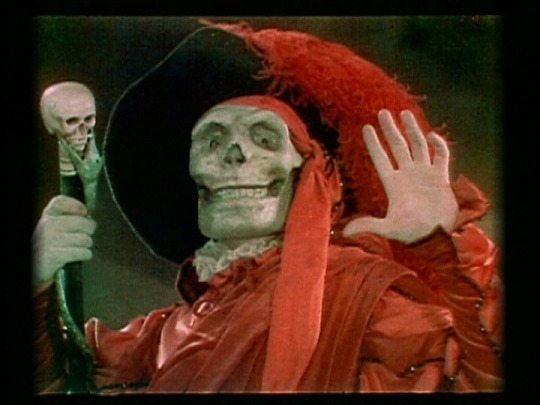
Universal’s Soundstage 28 was an integral part of the VIP tour at Universal Studios Hollywood for decades. Though the orchestra seats and the stage of the film’s Palais Garnier had long gone, the backside box seats of the auditorium remained. Stage 28 featured in numerous films after The Phantom of the Opera, including Dracula (1931), the Lon Chaney biopic Man of a Thousand Faces (1957), Psycho (1960), Charade (1963), Jurassic Park (1993), How the Grinch Stole Christmas (2000), and The Muppets (2011). The soundstage was also supposedly haunted, with individuals claiming to see a caped figure (Lon Chaney as the Phantom?) running around the catwalks, lights flickering on and off, and doors opening and closing on their own. In 2014, after standing for almost ninety years, Universal decided to demolish Stage 28 so as to expand its theme park. However, the historic set escaped the wrecking ball, as Universal decided to disassemble the set, place it into storage, and perhaps someday reassemble it. It is a fate far kinder than almost all other production design relics from the silent era.
Unlike what was coming out of Weimar Germany in the 1920s in the form of German Expressionism, American horror films had no template to follow when The Phantom of the Opera arrived in theaters. There would be no codification of American horror cinema’s tropes and sense of timing until the next decade. But without 1925’s The Phantom of the Opera, Universal would never become the house of horror it did in the 1930s through the early ‘50s (including the Dracula, Frankenstein, Mummy, Invisible Man, Wolf Man, and Creature from the Black Lagoon series). So, unbound by any unwritten guidelines, 1925’s The Phantom of the Opera – a horror film, but arguably also a melodrama with elements of horror – consumes the viewer with its chilling atmosphere and, from Lon Chaney, one of the best cinematic performances ever, without any qualification. For silent film novices, this is one of the best films to begin with (outside the comedies of Charlie Chaplin, Buster Keaton, and Harold Lloyd). Regardless of one’s familiarity with silent film, The Phantom of the Opera is a cinematic milestone.
My rating: 9.5/10
^ Based on my personal imdb rating. My interpretation of that ratings system can be found in the “Ratings system” page on my blog. Half-points are always rounded down.
For more of my reviews tagged “My Movie Odyssey”, check out the tag of the same name on my blog.
This is the twenty-third Movie Odyssey Retrospective. Movie Odyssey Retrospectives are reviews on films I had seen in their entirety before this blog’s creation or films I failed to give a full-length write-up to following the blog’s creation. Previous Retrospectives include Dracula (1931 English-language version), Oliver! (1968), and Peter Pan (1953).
#The Phantom of the Opera#Rupert Julian#Lon Chaney#Mary Philbin#Norman Kerry#Carl Laemmle#Gaston Leroux#Ernst Laemmle#Edward Sedgwick#Arthur Edmund Carewe#Gibson Gowland#Snitz Edwards#Virginia Pearson#Edward Curtiss#Maurice Pivar#Gilmore Walker#Lois Weber#silent film#TCM#My Movie Odyssey
6 notes
·
View notes
Text
Halloween Horror Marathon 2023
Due to an unprecedented (and extremely unfortunate) excess of free time, I was able to watch at least one horror movie per day for the entirety of October—a good mix of theatrical and home video/streaming releases; mostly first viewings, with a handful of revisits (especially towards the end of the month). Decided to compile all the titles in one convenient list for future reference:
Blood and Black Lace
Phantom of the Paradise
Re-Animator
Nightbreed
The Mystery of the Wax Museum
No One Can Save You
Spiral/Abbott and Costello Meet Frankenstein
X
100 Monsters/Exists
Doctor X/The Wolf Man
Hellboy: Sword of Storms
Dr. Jekyll and Mr. Hyde (1931)/Hocus Pocus
Door (Brooklyn Horror Film Festival)
The Timekeepers of Eternity
Tenebrae
Dracula 3D (Dario Argento)/Haute Tension
Edge of the Axe
Eyes Without a Face
Tetsuo II: Body Hammer/Tetsuo: The Iron Man/The Adventure of Denchu-Kozo
The Exorcist III
Killers of the Flower Moon
Ginger Snaps
Freaks
Daimajin/Return of Daimajin/Wrath of Daimajin
The Brides of Dracula/The Terror (Roger Corman)
The Phantom of the Opera (1925)/White Zombie/Sisters
The Editor
Five Nights at Freddy’s/Scooby-Doo 2: Monsters Unleashed
The Mad Fox
Suspiria (1977)/Dracula (1931)
The Exorcist (50th Anniversary screening)
#Happy Halloween#Halloween#Halloween 2023#film#horror#horror films#horror movies#horror movie marathon#Dario Argento#Stuart Gordon#Brian Yuzna#Clive Barker#Michael Curtiz#J horror#giallo#Shinya Tsukamoto#Carl Laemmle#William Friedkin#Brian De Palma#Tod Browning#the AMPTP has to cave eventually#I desperately need production work to resume#unemployment sucks#and this is an extremely unhealthy coping mechanism#consider this a cry for help#also Killers of the Flower Moon is a stretch#but I think it qualifies as horror#as does most of Scorsese's filmography
2 notes
·
View notes
Text

MOTION PICTURE NEWS, July 22, 1922
31 notes
·
View notes
Text

7 notes
·
View notes
Text

Carl Laemmle with Albert Einstein during the scientist’s visit to Hollywood motion picture studios on November 1, 1931.
31 notes
·
View notes
Photo



Carl Laemmle was a German American producer and co-founder of Universal Pictures, which he owned from 1915 to 1936. He and his son, Carl Laemmle jr. were most famous for overseeing the early Universal Horror films, including The Phantom of the Opera (1925), The Man Who Laughs (1928), Dracula (1931), and Frankenstein (1931). Laemmle also produced 1930's All Quiet on the Western Front, which brought him into conflict with the German government when the Nazi party demanded the film be banned for it's perceived insults to Germany. While the studio tried to appease German censors so as the continue to sell their movies in Germany, Universal was the first Hollywood studio to be banned from the country. Because of this, Universal Studios, while under Laemmle’s control, was the only Hollywood studio to not do business with the Nazis. When the company was seized from the Laemmles in a hostile takeover in 1936, Laemmle’s successor would try to re-enter the German market, appealing to the Nazis by selling himself and Universal as the only Hollywood studio not run by Jews, though this failed to convince the Nazis.
After his dealings with the Nazis over All Quiet on the Western Front, Carl Laemmle (a German Jew himself) would watch German Politics closely and with great concern. By 1932, though the Nazis had not yet seized power, he was so worried about the treatment of Jews in Germany that he wrote a letter to William Randolph Hearst, begging him to publicize the growing antisemitism in the country. A particularly prescient passage from this letter reads.
"I might be wrong, and I pray to God that I am, but I am almost certain that Hitler's rise to power, because of his obvious militant attitude toward the Jews, would be a signal for a general physical onslaught on many thousands of defenseless Jewish men, woman and children in Germany, and possibly in Central Europe as well, unless something is done soon to definitely establish Hitler's personal responsibility in the eyes of the outside world."
Hearst, who had become fascinated with Hitler, published nothing. Laemmle was forced to take matters into his own hands and spent vast amounts of time and money bringing Jews from Germany to America. Starting with his own German relatives and eventually, complete strangers. By the time he died in 1939, he had managed to save over three-hundred German Jews.
Image #1 and #2 are portraits of Laemmle, image #3 shows him with his daughter Rosabelle and his son Carl Laemmle jr.
19 notes
·
View notes
Text

The Phantom of the Opera (1925)
2 notes
·
View notes
Text
Thanks to this week's three(!) much appreciated snow days, I had the time to view several Carole Lombard comedies that have been collecting dust on my watchlist.
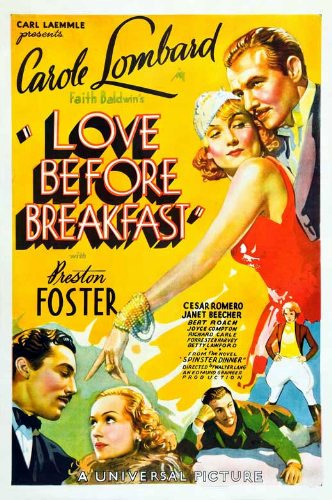

Love Before Breakfast was released by Universal in 1936, Carl Laemmle's 30th and final year as head honcho. The incongruously titled film was adapted from the rudely titled short story Spinster Dinner by popular romance author Faith Baldwin, whose works were frequently given the Hollywood treatment in those days--Wife vs. Secretary, Beauty, and The Office Wife notably so. For what it's worth, the story in its cinematic form has nothing to do with breakfast, dinner, or any mealtime at all, so neither title is a perfect fit.
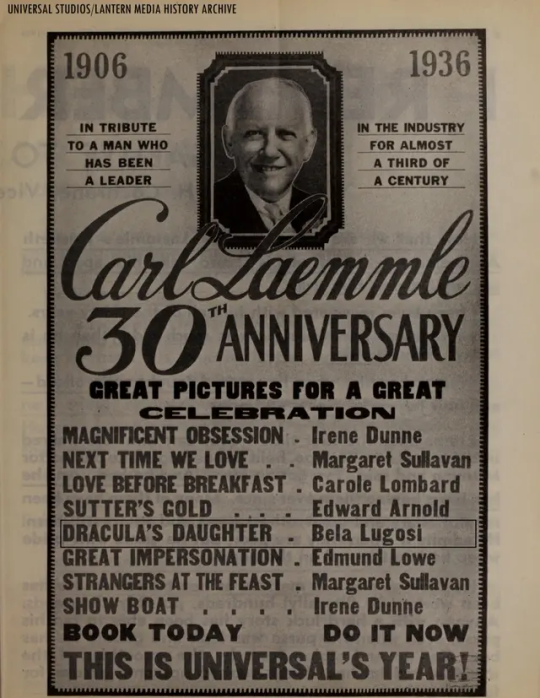

It's another one of those 1930s stalker comedies, and I wasn't laughing. The marketing surrounding Carole's black eye is thankfully not as it seems in the film itself, but I do wonder who thought domestic battery was a winning ad campaign for a new picture ("SHE SAW RED WHEN HE BLACKED HER EYE! What can a poor girl do with a guy who loves her so much that he socks her in the eye?" reads a press release. Are you laughing yet???).
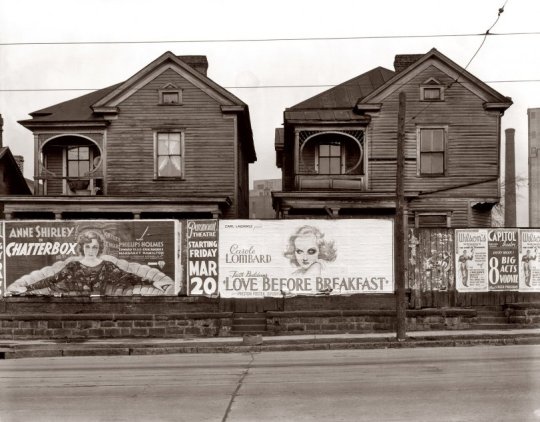
If your plot revolves around stalking and undermining a lady's autonomy at every turn, then it at least has to be funny and feature a leading man who almost makes you forget he's committing a felony in the name of love (Top Hat comes to mind). Unfortunately, Love Before Breakfast isn't especially zippy or lighthearted--0 for 7 in the writing department, even with Preston Sturges on board for a time--and so can't mask crime veteran Preston Foster's lack of obvious romantic charisma. It pains me that Melvyn Douglas didn't end up with the part. Girlies, we lost... and don't get your hopes up seeing Cesar Romero in the cast. He's scummy too. :(
At the very least, we get beautiful costumes by Travis Banton, some coffee in teacups, and a cute photo op of Carole and director Walter Lang holding inscribed eggs.



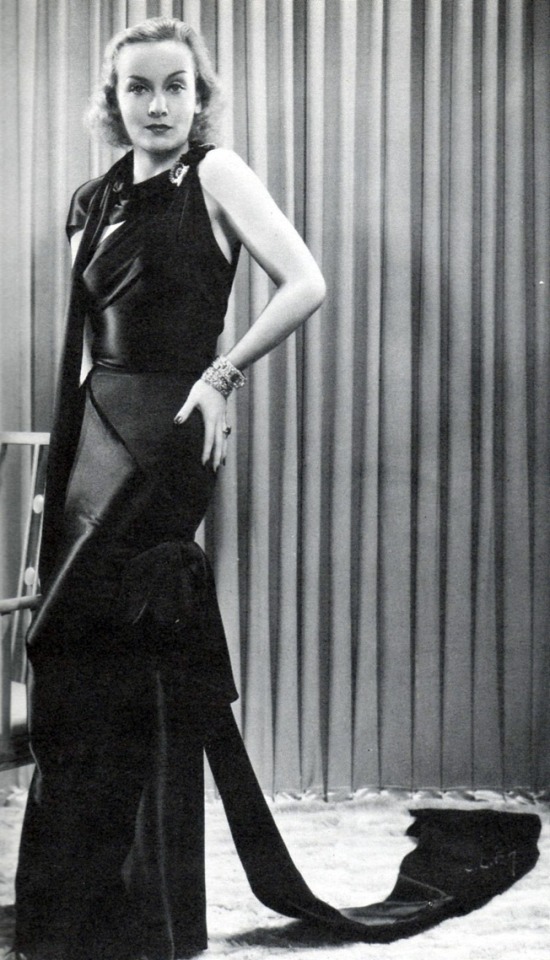

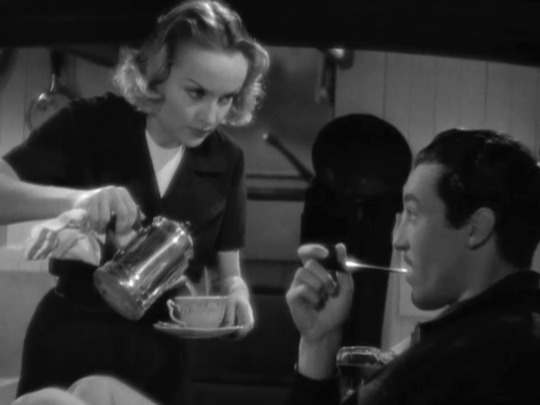
They read as follows:
To Miss Carole Lombard "A Swell Egg" From "The Lang Troupe" At Universal
To Mr Walter Lang "A Swell Egg" From His Gang At "Universal"

I'll be back with a little digital scrapbook review for Hands Across the Table soon. Until then, feel free to check out my star rating for Love Before Breakfast and learn a little more about me on Letterboxd.
#love before breakfast#carole lombard#preston foster#cesar romero#1936#walter lang#comedy#screwball comedy#romance#universal#carl laemmle#travis banton#classic film#classic movies#classic hollywood#old hollywood
1 note
·
View note
Text


Now showing on my Spooktober and DuranDuranTulsa's Plenty Scary Movie 🎥... Frankenstein (1931) on glorious vintage VHS 📼! #movie #movies #horror #frankenstein #carllaemmle #boriskarloff #universalmonsters #30s #maryshelley #vintage #vhs #durandurantulsa #plentyscarymovie #8sThePlace #ktul #durandurantulsasplentyscarymovie #spooktober #halloween #october
#movie#movies#horror#frankenstein#carl laemmle#boris karloff#mary shelley#universal monsters#30s#vintage#VHS#duran duran tulsa#plenty scary movie#8's the place#ktul#duran duran tulsa's plenty scary movie#Spooktober#halloween#october
0 notes